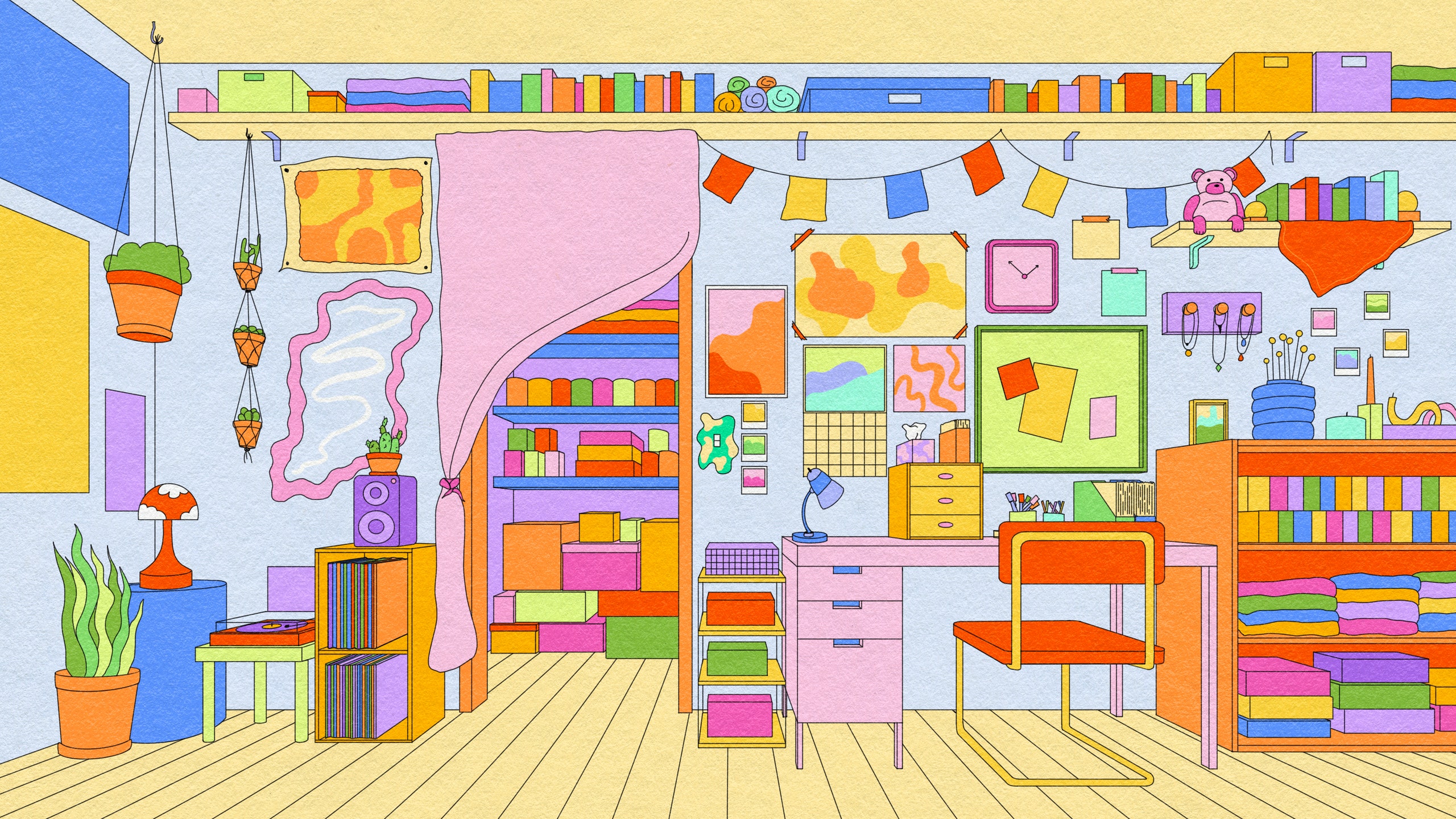While millennials are decluttering, Gen Z has been busy amassing stacks and stacks of stuff. Born between 1997 and 2012, my generation was the first to grow up with the haul video. We birthed (and basked in) cluttercore and have completely shucked off the restrictive world of Marie Kondo minimalism that our elders embraced with open arms. But how did a generation that cares so deeply about sustainability come to embrace such a lush form of materialism?
“I think us growing up being perpetually online since the day we were born makes us a little bit more amenable to receiving advertising in different forms,” says Ellyn Briggs, a brands and marketing reporter at Morning Consult who’s worked on a variety of reports on the behavior of Zoomer consumers. One such report breaks down which internet content is getting us to open our wallets most often: the haul video. “What works best, and again what our research shows, is that haul videos, get-ready-with-me [videos], any advertising as entertainment—rather than an actor dancing in a highly produced high gloss advertisement—we tend to respond better to something that feels natural and native to the environment.”
Haul videos began during YouTube’s infancy in 2008, when even the eldest Zoomers amongst us had not yet reached their teen years. As such, in the course of our digitized lives, we’ve watched the form mature—and although it certainly influenced consumer behavior during its nascent stages, the art of the haul fully blossomed on TikTok.
“On YouTube, you have to click on something, that takes you somewhere else, and what do you do next? Obviously, on a TikTok session you just swipe through 200 or 300 or even more videos—that’s just the natural form of viewing. It sped up the entire process,” says Marcus Bösch, the researcher and consultant behind the newsletter Understanding TikTok. “TikTok is like a slot machine. You go on and the next video might be more interesting than the previous one.”
Marcus’s succinct definition of the appeal of TikTok closely mirrors what Wendy A. Woloson, author of Crap: A Cheap History of America and a professor at Rutgers University, considers one of the most important elements of consumer interest across time: the allure of novelty. “The idea of constant change and churn…of course, you can do that a lot more easily if things are cheap,” Wendy explains. “That’s one of the reasons why we like stuff like the dollar store as much as we hate it, and why we love fast fashion. In both cases, we don’t have to be faithful to any one object for any amount of time and we can keep recreating our material world in our spaces.”
Haul videos, rather than the mere act of shopping for oneself, compound the thrill of novelty. On a platform like TikTok, a user may not even be seeking a haul video, and they likely don’t recognize the person who uploaded the video either, so the video becomes a sort of nesting doll of surprise, each aspect an unknown variable.
